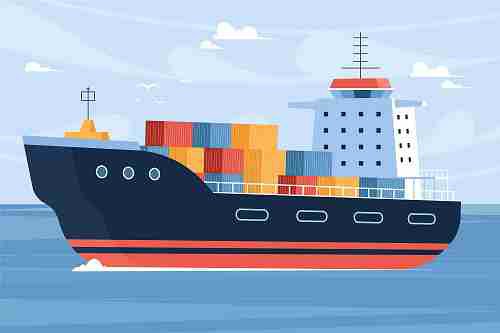
Sea freight continues to serve as the foundation of shipping operations in the enormous and interconnected web of global trade, guaranteeing the smooth movement of goods across continents. In recent times, there has been a discernible alteration in worldwide supply chains as businesses have been assessing and restructuring their approaches to maritime freight. Numerous factors, including economic and technological advancements, are responsible for this transformation.
We will look at the seven primary reasons behind the significant global supply chain shifts observed by the sea freight services sector.
Evolving Economic Landscapes
The constantly changing economic environment is the primary driving force behind the changing dynamics of global supply chains. The conventional routes and hubs for maritime freight services are being redesigned in light of emerging markets and the emerging financial circumstances of established players. Businesses are strategically realigning their supply chain networks to exploit new opportunities and find the most economical and effective sea freight solutions.
Technological Innovations In Sea Freight Operations
The sea freight industry has undergone significant change due largely to technological advancements. How sea freight businesses run is completely transformed by automation, data analytics, and the Internet of Things (IoT). Sea freight operations are becoming more efficient thanks to improved communication channels, predictive analytics for route optimization, and real-time cargo tracking and monitoring. An industry-wide shift is sparked by the competitive advantage that companies obtain from adopting these technologies.
Environmental Concerns And Sustainable Shipping Practices
The worldwide movement towards sustainability has impacted the shipping industry, which has forced sea freight companies to implement eco-friendly measures. Reducing carbon footprints and embracing eco-friendly container shipping practices are becoming increasingly important as the environmental effects of traditional shipping methods come under closer inspection. Businesses that put an emphasis on environmentally friendly sea freight services not only comply with legal requirements but also win over customers who care about the environment.
Diversification Of Supply Chain Risks
The COVID-19 pandemic revealed weaknesses in international supply chains, which prompted businesses to reevaluate and broaden their approaches to risk management. To maintain resilience in the face of unanticipated disruptions, sea freight companies are investigating alternate routes, suppliers, and modes of transportation. In addition to responding to pandemics, this diversification considers other variables that may affect the stability of supply chains, such as natural disasters and geopolitical unrest.
Rise Of E-Commerce And Changes In Consumer Behavior
Demand for sea freight services has changed due to the exponential growth of e-commerce and consumer expectations. Due to the demand for quicker and more adaptable shipping options, businesses are forced to reassess their supply chain models. Businesses trying to meet the demands of the contemporary consumer market find that sea freight companies that can provide effective and dependable services are increasingly important partners.
Strategic Alliances And Collaborations
Strategic alliances and collaborations are being formed by sea freight companies in an attempt to maximize costs and improve efficiency. Companies can provide more competitive sea freight services thanks to these partnerships, making sharing resources, infrastructure, and expertise easier. Companies that pool their resources to create synergies can increase both their bottom line and the overall efficacy of global supply chains
Regulatory Changes And Compliance Requirements
The shipping industry operates in a dynamic regulatory environment where modifications to the law affect the operations of sea freight companies. Maintaining the integrity of global supply chains depends on compliance with international standards and regulations, which is not only required by law. Businesses are better positioned to offer dependable and compliant sea freight services if they can stay ahead and adjust to regulatory changes.
Conclusion
As the world's trade changes, the maritime freight sector is leading the way in this transformation. Several factors, including technological, environmental, regulatory, and economic, contribute to the changing dynamics of global supply chains. Sea freight businesses can influence how international trade develops if they can adapt to these changes and adopt creative solutions. Understanding and addressing these changes will ensure a more resilient and effective sea freight industry.
The shifting tides of global supply chains in sea freight operations are not merely a response to singular factors but a complex interplay of economic, technological, environmental, and regulatory influences. The sea freight industry is undergoing a transformative phase, and companies that recognize the significance of this paradigm shift are better equipped to thrive in the evolving landscape.
In essence, the sea freight industry is at a crossroads, presenting both challenges and opportunities. The companies that leverage these shifts to innovate, collaborate, and prioritize sustainability will weather the storms of change and chart a course towards a more efficient, resilient, and sustainable future for global supply chains.





 Get instant quote
and compare offers in real time
Get instant quote
and compare offers in real time